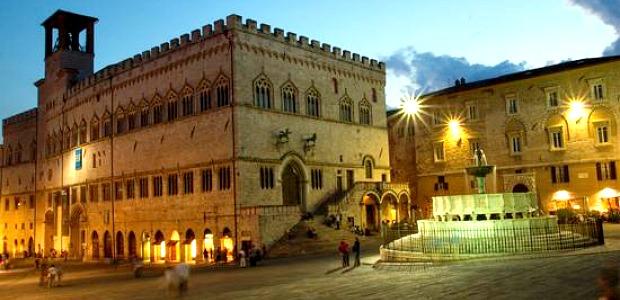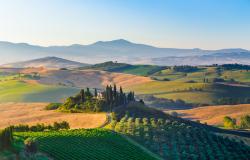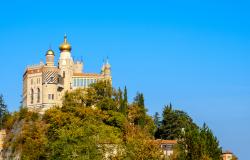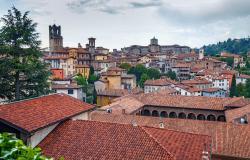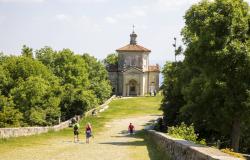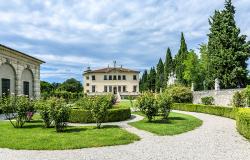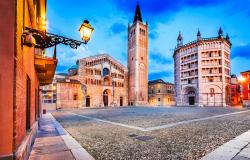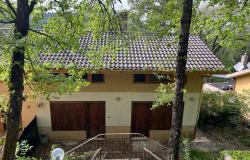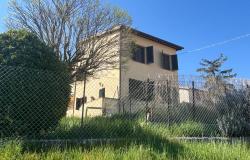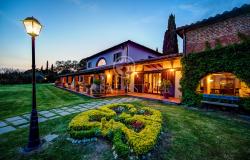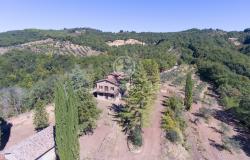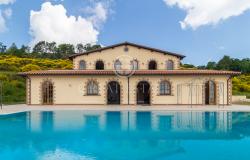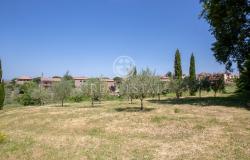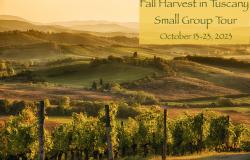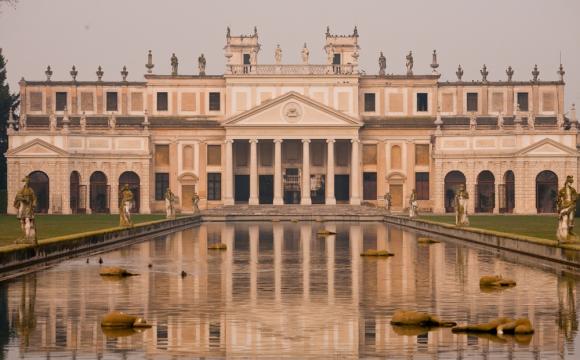Perugia, capital of Umbria in central Italy, lies sprawled high over the Tiber Valley like a prickly limpet, immovable, seemingly impenetrable and unchangeable. It’s as though the modern era has passed it by, like a wave washing over it.
The medieval buildings now house high fashion shops and boutiques, elegant palazzi contain coffee bars and chocolate shops. In many ways, it is Italy’s most enigmatic provincial capital, with its own distinct personality. Against the sober architecture some of the most vibrant events take place here every year, such as the annual Chocolate Fair and, of course, the world-class Umbria Jazz every July.
Historically, Perugians have proved incredibly violent, waging shocking vendettas. The most infamous were the dreadful Baglioni family who ruled Perugia for much of the early 16th century. They once bloodied the steps of the Cathedral so badly that it had to be washed clean with wine and reconsecrated. When finally they murdered a papal delegate, sent to quell the tempest, the Pope acted swiftly, exiled the family and erected a huge fortress, the Rocca Paolina, smack on top of the Baglioni’s many houses... and this is where we enter the city.

Piazza IV Novembre - Perugia
The best place to arrive is at Piazza Partigiani, a central bus station and major car park. Unfortunately you may arrive shattered as the road is winding, weaving in and out of the valleys and ridges, where you can easily get lost, but once you’re there you can breathe a sigh of relief.
Moving staircase, moving scenes
Cross the road (there is an underpass), follow the bull’s-eye signs for centro and you’ll find a series of escalators that take you up the steep hill to enter the strange world that was once the streets and the houses of the Baglioni, entombed under the Pope’s great Rocca Paolina. Here you’ll see bricked-up windows that have not seen the sky for five hundred years and rooms originally lived in by the mutinous families and subsequently used as prison cells by the Papal Army.

Rocca Paolina - Perugia - Scale Mobili
As you climb through the lanes you feel that you are indeed prying your way under the limpet to emerge into the open air of Piazza Italia. At the time of the Reunification of Italy, 300 years later, the Perugians were able to throw off the repressive Papal regime and reclaim their freedom by tearing down the Rocca, brick by brick. Today, there are government administrative offices and a proud equestrian statue of their liberator, Vittorio Emmanuele.
Now you are at the beginning of one of the great vistas of Italy: Corso Vannucci, a piazza-wide pedestrian concourse of shops and restaurants that beckons you toward the Duomo and the main staging area of Perugia.
As you stroll along there are two stops that are a must. On the right about halfway up the Corso is one of the great cafés, Sandri Pasticceria , where you can indulge in Perugia’s famous chocolates. For lunch I’d recommend the Ferrari to the left off the Corso at number 43 (closed Monday) with umbrellas and tables in fine weather or Café di Perugia in Via Mazzini off to the right for a light lunch but better on your return, for an evening meal.
Paintings aplenty
Further along on the left is a Renaissance gem: the Collegio del Cambio.
This exquisite jewel is well worth the moderate entrance fee of 22.58. This is the masterwork of Perugia’s most famous adopted son, Pietro Vannucci, known as Il Perugino, one of the Renaissance’s hardest-working painters. He was commissioned in 1500 by the Exchange Guild and it is thought that his more famous pupil, the young Raphael, also worked on the frescoes that illuminate the two exquisite rooms of the Collegio.

Collegio del Cambio - Perugia - Frescoes by Il Perugino
Further along Corso Vannucci, the National Gallery of Umbria houses outstanding works by Fra Angelico, Piero della Fracesca, Perugino and Pinturicchio. It’s a large collection so allow an hour and a half for viewing.
At the top of the Corso you are in the heart of Perugia where everyone hangs out on the steps of the magnificent Palazzo dei Priori, still used today after 700 years as the Council Chamber. The grand building with heraldic copper griffin and lion was the magnificent building of its age, equalling anything found in Paris or London. The painted Notaries’ Hall, whose vault is supported by eight Romanesque arches, has frescoes depicting legends and coats of arms of the various Captains of the People.
In stark contrast, across the piazza is the unfinished façade of the Cathedral of St. Lawrence. To the left is the Loggia di Braccio, built by one of the appalling Baglioni. In the centre of the Piazza is the Great Fountain, another outstanding 13th-century artefact with panels and sculptures by Nicola and Giovanni Pisano celebrating the months, Adam and Eve and assorted Aesop’s fables.
Seat of learning
To the left of the Duomo downhill is the extraordinary Maestà delle Volte, a mishmash of surviving medieval doors and arches that meanders down to Piazza Cavellotti.

Via Maestà delle Volte - Perugia
Turn right along Via Cesare Battisti, looking over the Via Appia and you finally come alongside Palazzo Galenga, home of the Università per Stranieri di Perugia (www.unistrapg.it) where many thousands of foreigners have learnt Italian.
To the right is the imposing Etruscan Gate, built in the 3rd century BC, a great symbol of Perugia. If you have time, cross the road in front of Palazzo Galenga and up narrow Via Garibaldi. Turning right at Via Tempio, you arrive at the beautiful circular Tempio of St. Michael Archangel, one of the earliest surviving Christian churches, dating from the 5th and 6th Centuries.
Finally backtrack directly through the Etruscan Arch, and up the hill to Corso Vannucci and plunge back though the underground vaults to the car park.
As you return, you can soak up the sinister mystery of Perugia, sweetened by the chocolates, knowing that the grey stones with a colourful and bloody past now resonate to a syncopated rhythm.
Facing the drive home, remember that violent history maybe a thing of the past but today, in some circles, Perugians hold the dubious honour of being Italy’s most aggressive drivers.
Useful
- More news about Umbria
- The weather in Umbria.
- Map of Umbria
- Accommodation in Umbria
- Properties for Sale in Umbria
- Italian Language Schools in Umbria
